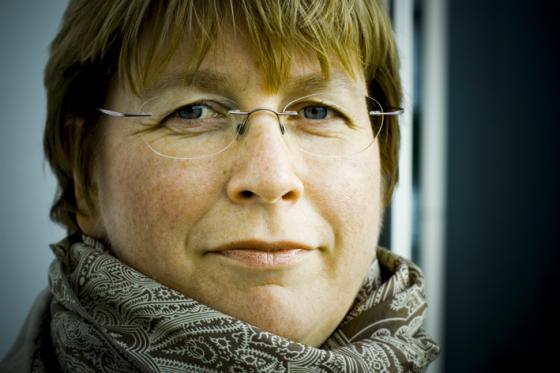“Diversity efforts must be customized”
Specific advice on how to increase diversity in academia is now being developed – but there is no “one-size-fits-all” solution.
“Just as there are routines for addressing sexual harassment in the workplace, there should also be routines for dealing with racism,” says Elisabet Ljunggren of the KIF Committee.
She is the chair of the working group that has been drawing up specific advice and concrete measures for diversity efforts in universities, university colleges and research institutes. The advice is based on the report about diversity in academia presented in March 2016, “It’s not an advantage to be a foreigner” (in Norwegian only), prepared by the Work Research Institute (AFI) and the Nordic Institute for Studies in Innovation, Research and Education (NIFU).
Read the report of the working group Action for diversity: Recommended measures to promote academic staff diversity in research and higher education
According to Ljunggren, the challenges are not only numerous but complex:
“The sector consists of various academic units that have their own recruitment pools, and diversity efforts must be approached in ways that are adapted to the various institutions.”

“Other challenges emphasized in the report are a lack of inclusion in the workplace and a lack of networks and knowledge about the systems in Norwegian academia – systems such as research funding,” she says.
Read: Immigrants want to be included, but aren’t
Vastly different immigrant groups
There are also huge differences in the various groups encompassed by the term “immigrant”, an important consideration which is also reflected in the report:
“There are many different starting points, prerequisites and possibilities for having a successful academic career for people with different types of immigrant backgrounds – for example, academics who are immigrants with formal education from their home countries, foreign-born immigrants with an education from Norway, international academics recruited from abroad, or Norwegian-born children of immigrants,” says Tatiana Maximova-Mentzoni of the Work Research Institute, one of the authors of the report.
“In general, if you’re Norwegian or ‘international’, meaning you’ve been recruited from abroad, it’s easy for the leadership to know how to handle your situation – the institutional management often has clear ideas about the kind of follow-up and adaptations needed by academics recruited from abroad. However, academic employees who are immigrants and have been living in Norway for some years are a much less visible group. There is practically no follow-up or adaptations for them,” says Maximova-Mentzoni.
“In the report we also found that diversity plans which are blindly developed on the basis of anti-discrimination legislation may have little impact. Instead of talking about discrimination, we should begin to work for more inclusion,” she explains.
Multifaceted diversity package
The complexity of diversity efforts is also a concern of Arnfinn Midtbøen of the Institute for Social Research, who studies immigration and integration issues in working life. He has previously given a presentation at the KIF Committee’s workshop on diversity efforts, and emphasizes to Kifinfo.no that diversity leadership in the workplace is a challenging field.
“It must be difficult for the KIF Committee to get an expanded mandate, from working with gender equality to working with diversity and equality between multiple groups – which makes it much more complicated to define the problems and the groups,” he points out.
Midtbøen explains:
“Now there are just as many women as men in general, but when you begin to work with various minority groups, the factors, definitions, groups and problem areas all become much more extensive. Some measures are difficult – for example, how can a measure on gender quotas be transferred to ethnic diversity? Who should the quotas be applied to and what are the criteria? When is a person no longer an immigrant or ethnic minority, for example? There are so many different things in the ‘diversity package’, and it’s not easy to find a way to address all the issues.”
The researcher emphasizes that this does not make diversity work any less important.
Networks fit well for some, not for others
Elisabet Ljunggren says they are very aware of precisely this situation in both the KIF Committee and the working group.
“We have discussed the issue of complexity a great deal, and clearly there is no ‘one-size-fits-all’ solution. When working with diversity, it’s much harder to recommend measures that everyone should implement than when we work with gender balance,” says Ljunggren.
She explains that the working group has discussed whether career-enhancing networks for minorities should be introduced in university colleges, universities and research institutes:

“So far we have mixed views about this measure. It might be a good idea for some groups, but if you’ve recruited academics from senior-level positions in the US or England, a network is not what those individuals need. On the other end of the spectrum, we have PhD students and post-docs with a foreign background who have an entirely different status within the organization and could benefit from a career-enhancing network. In short, we are not talking about a single group but many different groups, and we can’t try to implement measures that fit everyone,” says the project leader.
Institutional solutions
There are also significant differences among the institutions. As Ljunggren points out, Norway’s largest university, NTNU, has a different situation regarding the scope of diversity and the various groups involved than a small university college, for example.
The solution lies in encouraging each institution to customize its diversity strategies, as well as to analyse and, in particular, to evaluate its own situation:
“The measures must be adapted to the challenges that arise in the workplace at the institutional level. What the KIF working group offers is a toolbox of recommended measures, and then the individual institution must analyse its own situation and prepare a customized diversity strategy with plans for measures – with deadlines and clear goals,” she says.
Among the concrete measures that the working group will recommend are mentoring programmes, search committees, promotion measures and systematic career planning in cooperation with an employee’s closest supervisor.
“Senior-level professors with a foreign background may also benefit from mentoring programmes if they need to understand the Norwegian academic system and factors such as how to prepare grant applications, career-cycle mechanisms and other regulations. With regard to search committees, we can probably benefit from taking a broader perspective on diversity and ensuring that the applicant pool is more diverse in addition to more gender balanced,” says Ljunggren.
“The management must lead the efforts”
According to Ljunggren, however, there is one measure that is critical for absolutely everyone: senior-level management must play an active role in diversity work.
“Our experience from working with gender balance is that the senior-level management at the institution must support the efforts – or not just support them, but lead them. If the leadership does not actively promote the plans for measures, the efforts fall flat and lose their importance. We have seen this clearly when we have worked with gender balance, and there is no reason to think this will be different when it comes to diversity measures,” she says.
The importance of the leadership is also reflected in the report and the informants from the case institutions, according to Maximova-Mentzoni:
“There is a need for supportive personnel leadership at the institutions, and if the senior-level management is not actively involved in the diversity measures, then the measures will have limited impact and little effect on the individual employees,” says the researcher.
“The importance of ‘diversity leadership in daily activities’ was made clear in our interviews with informants, that is, foreign-born academics. We found that the case institutions work a great deal with diversity issues, that diversity is high on their agenda and that the efforts are actively supported by the leadership. By the same token, we see that in daily activities, and in the lower levels of the institution, diversity work is not being done. Our informants said they want an organizational culture that fosters respect for individuals and difference and that is apparent in their daily life at the workplace,” Maximova-Mentzoni explains, and then adds:
“Our case study showed that most informants thought the recruitment process went smoothly, but they missed having clear leadership and a more inclusive working environment.”
According to Ljunggren, it is also important that the individual institutions customize their solutions based on a self-analysis and, in particular, that they evaluate the measures over time to see whether they are working as intended.
“But the Ministry of Education and Research, the Research Council of Norway and professional associations all must participate and become involved in the general efforts to promote diversity in academia – and the KIF Committee will also continue to do its part to make a positive impact in this area,” she says.
Translated by Connie Stultz.
The Diversity Report:
- The report “It’s not an advantage to be a foreigner – Career pathways and barriers for immigrants in Norwegian academia” was presented on 11 March 2016.
- The Work Research Institute (AFI) and the Nordic Institute for Studies in Innovation, Research and Education (NIFU) have conducted a study to learn more about the career pathway of ethnic minorities in Norwegian higher education and research for the Committee for Gender Balance and Diversity in Research (the KIF Committee).
- The resulting report consists of a literature study, analyses of selected, accessible and relevant statistics, and qualitative case studies of three institutions in the university, university college and research institute sector.
The working group:
- The KIF Committee has appointed a working group to develop advice, input and recommendations for measures to increase diversity and improve diversity efforts in Norwegian academia based on the Diversity Report.
- Elisabet Ljunggren of the KIF Committee and Nordland Research Institute is the chair of the working group, which consists of Liza Reisel (Institute for Social Research), Nadarajah Shanmugaratnam (professor emeritus, Norwegian University of Life Sciences), Warsame Ali (Norwegian Centre for Minority Health Research), Sevil Sümer (Uni Research Rokkan Centre), Yan Zhao (Nord University), Mariann Helen Olsen (Norwegian Association of Researchers), Vibeke Horn (Oslo and Akershus University College) and Gunnhild Rønningen (Research Council of Norway).
- The working group held meetings in June and August, and has worked with developing input in recent months. The chair of the working group presented the report Recommended measures to promote academic staff diversity in research and higher education on 7 December 2016 at a seminar on new statistics regarding diversity in Norwegian academia.


